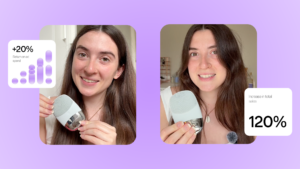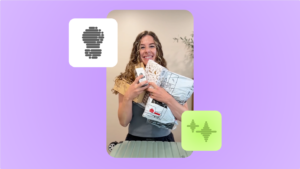From Hook Rate to Hold Rate: Video Metrics Growth Teams Track
Passionate content and search marketer aiming to bring great products front and center. When not hunched over my keyboard, you will find me in a city running a race, cycling or simply enjoying my life with a book in hand.
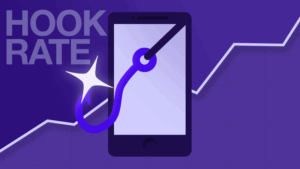
Your video ad has three seconds to stop the scroll. Platforms like TikTok and Meta grade ads on an instant hook rate - the share of viewers who stick for those first 2-3 seconds. Miss that window and their algorithms throttle reach, slicing CTR and ROAS.
Many teams still tweak thumbnails or targeting while ignoring the opener, wasting testing cycles and budget. Pairing hook rate with hold rate (viewers who stay from 3 to 15 seconds) shows whether your narrative converts curiosity into clicks. In this guide you’ll learn how to calculate, benchmark, and systematically lift both metrics so every creative dollar compounds.
TL;DR:
- Hook rate reveals who stays past the first 2-3 seconds.
- Hold rate tracks 3-15 sec viewers, showing if the story stays interesting.
- Target around 30–40 % hook rate and 25 %+ hold rate to lift clicks.
- Audit creative in sequence: Hook → Hold → Clicks for compounding returns.
What is a Hook Rate?
Think of hook rate as your ad’s thumb‑stop score. In other words, it measures how many viewers stay on your video past a certain time frame.
On TikTok it’s the ratio of 2‑second video views to impressions, while Meta uses the 3‑second view threshold. Both formulas tell you how many scrollers you actually pause, not just reach, in the feed. Marketers may call the same metric “thumb‑stop rate,” “scroll‑stop ratio,” or the 3‑second view‑through rate (VTR), but the core idea is unchanged: instant relevance.
Looking to measure the hook rate for your video ads? Most tools these days will offer the metrics for you, but it is still good to understand how they are calculated. To get the hook rate, pull the 2 or 3 second view column and divide it by impressions.
Why Hook Rate Matters
Algorithms don’t judge your ad on good intentions – they judge the first three seconds.
A high hook rate signals the platform that your ad is instantly relevant, earning extra reach and cheaper impressions. When brands nail the opening, they see about 60% more total retention and a noticeable algorithm lift on TikTok and Meta. That retention flies downstream: a TikTok review of top‑performing ads found 63% delivered their core message within three seconds, while Facebook data shows nearly half of those who stay three seconds will watch thirty.
Performance marketers feel the impact further down‑funnel. Agency studies consistently link bigger hook rate numbers to stronger click‑through rates and ROAS. In one multi‑account audit, creatives with elite ad hooks outperformed peers across every KPI tracked. In practical terms, dialing in your opener can shave paid‑social costs by double‑digit percentages, savings you can pour back intoad testing or scaling.
If you care about building ads that convert, the lesson is clear: protect the first seconds like prime real estate. Evaluate openings alongside mid‑video beats, integrate proven UGC hooks for authenticity, and watch your spend work harder.
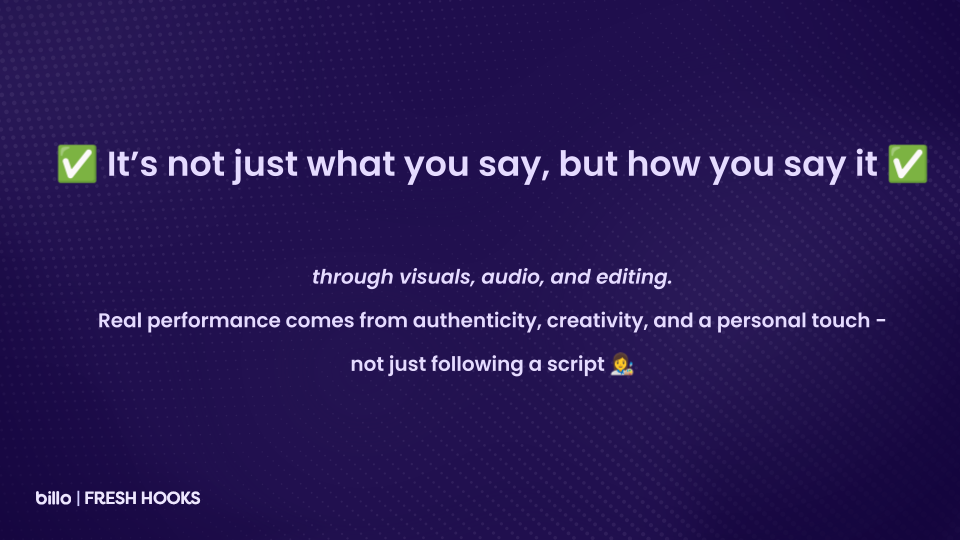
Benchmark Your Hook Rate
A number with no context is just noise. To know if your opener pulls its weight, compare it to real‑world ranges:
- Across 11 TikTok ad accounts discussed in the Tuff Agency study, the average hook rate landed at 30.7%, while top‑quartile creatives climbed to 40-45%.
- Vaizle’s 2025 review of Meta video ads calls 20-25% a solid baseline, with top performers pushing past 30%.
- Vixen Digital advises brands to treat 25% as table‑stakes and 30%+ as best‑in‑class.
- A 2025 Zeely Meta‑ads analysis shows campaigns climbing to 30-50% hook rates once creatives are optimized.
Taken together, you can set clear tiers:
- Elite: 40%+ on TikTok, 35 - 45% on Meta.
- Competitive: 30 - 39%, good, but plenty of headroom.
- Fix‑it zone: below 25%; start testing sharper first frames, tighter copy, or punchier audio.
Because these ranges come from multi‑account studies published in 2022‑2025, they mirror current platform norms. Track weekly, segment by hook concept, and promote winners. The compounding reach advantage can turn a 30% opener into a 2× ROAS swing over time.
How to Track & Report Hook Rate
Measuring hook rate inside each ad platform keeps the math transparent and apples‑to‑apples.
In TikTok Ads Manager, add the built‑in 2‑second video views and impressions columns, then create a custom metric dividing the two. Layer the 6‑second focused‑view rate to spot openings that grab attention but lose steam (TikTok Ads Manager Glossary).
In Meta Ads Manager, build a calculated field: 3‑second video views ÷ impressions. Add a sister metric for hold rate – ThruPlays ÷ 3‑second views . So you can see whether the story keeps viewers once the hook lands (Meta Help Doc).
Refresh these numbers 24 hours after launch, then daily. Promote creatives that clear 35% hook and 30% hold; pull budget from laggards. For a single‑view dashboard, dump both metrics into a spreadsheet or use a template like Billo’s ad performance metrics guide to visualise Hook → Hold → Click. Keeping the trio side‑by‑side lets teams back winners fast and turn small tweaks into compounding ROAS gains.
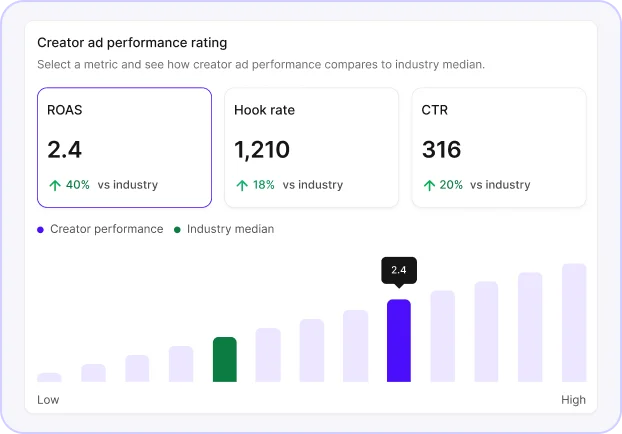
Boost Your Hook Rate
Start with a crystal‑clear promise. Open by showing the payoff viewers care about – saving money, fixing a pain, or hitting a goal. TikTok ads that lead with a direct value prop, a trending audio clip, or a punchy question see meaningful lifts in thumb‑stop rate. Translate the promise onto the very first frame and subtitle so it’s unmistakable even on mute.
Add a pattern‑interrupt. An unexpected visual – smash cut, abrupt zoom, or prop reveal. It jolts users out of autopilot. DotMe found that “surprise” first frames drive 60%+ higher retention through the opening seconds, giving the algorithm more signal to boost reach. Build tension fast, then pay it off before second three.
Show a real face and native cues. Human eye contact, bold on‑screen text, and platform‑native editing tricks (e.g., TikTok’s caption stickers) help your video blend in with organic content. In a six‑brand analysis, SendShort saw creatives with human presenters and native overlays outperform polished, brand‑heavy versions on Hook Rate by 5‑10 points. Lean on authentic UGC formats – see Billo’s library of proven UGC hooks and broader UGC marketing tips for inspiration.
Test each lever in isolation: swap the first frame, rewrite the opening text, or layer fresh audio. Small tweaks often add +10% hook without touching the rest of the edit.
Integrating Hook & Hold Rates
Great campaigns treat hook and hold as a one‑two punch, not isolated stats. Raise the hook first – no amount of mid‑video magic will matter if you never stop the scroll. Once you’re clearing a reliable 30%+ hook, shift focus to hold rate to confirm the story keeps selling.
Diagnose in sequence. Start by charting Hook → Hold for every creative. A video with high hook but < 25% hold is a pacing problem. Viewers stick around only to bail once the narrative stalls, so tighten edits or add pattern‑interrupts after second three.
Formula‑driven tweaks. Build hold as ThruPlays ÷ 3‑second views inside Meta, or use TikTok’s 6‑second focused‑view rate to approximate retention.
Optimize, then cascade. Once both metrics hit target – say 35% hook and 45% hold. Layer call‑to‑action tests to turn attention into clicks and purchases. This sequential optimisation mirrors agency findings that scaling hook first, then fine‑tuning mid‑video beats, compounds ROAS gains.
Treat hook and hold like gears: engage first, sustain next, and every rotation drives cheaper reach and stronger conversion.
Summary
In paid social, seconds decide sales. A strong hook rate stops the scroll; a healthy hold rate proves the story’s worth.
Hit around 35% hook and 45% hold, then scale spend and test CTAs. Use the simple dashboards outlined above or utilize Billo platform insights with hook rates, CTR and ROAS to spot winners in hours, not weeks.
Ready to stack creative wins? Explore Billo’s library of high‑performing UGC video hooks or brief a new batch of creators today and turn every second into ROAS.
FAQs
What is a “good” hook rate on TikTok and Meta?
Benchmarks from multi‑account studies put 30%+ as healthy and 40%+ as elite on TikTok. On Meta, aim for 25% as table‑stakes and push past 30% for best‑in‑class performance.
How do I calculate hook and hold rates inside the ad platforms?
In TikTok Ads Manager, divide 2‑second video views by impressions for hook; use the 6‑second focused‑view ratedivided by 2‑second views for hold. In Meta Ads Manager, build custom fields: 3‑second video views ÷ impressions for hook and ThruPlays ÷ 3‑second views for hold.
Does improving hook rate actually lower my CPMs?
Yes. TikTok and Meta reward ads that hold attention early. DotMe reports 60% higher total retention leads to noticeable delivery boosts and cheaper impressions, while Vaizle data shows strong hold translates into lower CPMs over time.
I have a great hook but my hold rate is under 25%. What quick fixes work?
A low hold after a strong hook usually means pacing stalls. Add pattern‑interrupts, tighten edits after second three, or insert new value props quickly. Even small cuts can lift hold by 5-10 points, compounding ROAS.
SEO Lead
Passionate content and search marketer aiming to bring great products front and center. When not hunched over my keyboard, you will find me in a city running a race, cycling or simply enjoying my life with a book in hand.

Authentic creator videos, powered by real performance data
22,000+ brands use Billo to turn UGC into high-ROAS video ads.
From Guesswork to Growth: A Practical Creative T...
Ad-hoc creative testing often produces noisy results. When multiple variables [...]...
Read full articleTesting Ad Variations: How to Consistently Lift ...
Most performance gains come from better creative, not targeting tweaks. [...]...
Read full articleAI‑Driven Creative Coaching: How Machine Learn...
Creative is no longer just a variable – it’s the [...]...
Read full article

